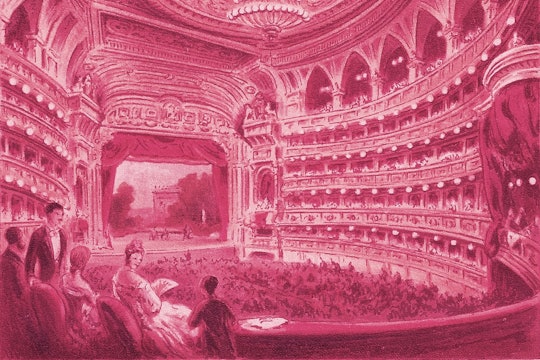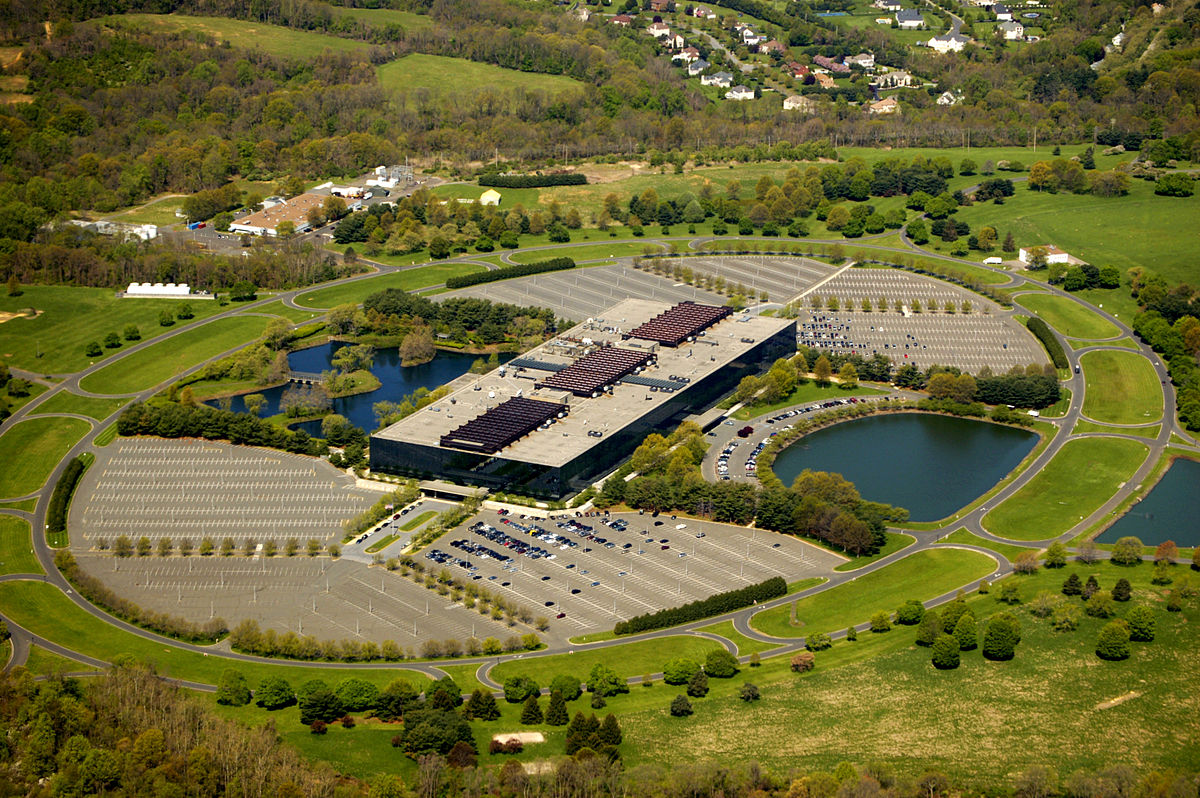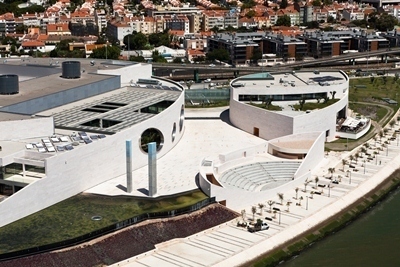
How theater, startup culture, and business history helped us become better neuroscientists
The sciences would benefit enormously from applying lessons from art and business
"Work hard, play hard" sounds easy. It's the kind of motto touted by startups and universities, a cliché to sum up the hopes of talented people eager to have fun doing what they love. In practice, it's all too rare, yet worth recreating in labs and companies everywhere, a way to improve collaboration and creativity in unexpected ways.
One of your authors, Gonçalo Lopes, found it in a century-old startup and one of its 21st-century successors; his fellow neuroscientist, Danbee Kim, found it seven dramatic days each semester at MIT. Both were crash courses in how teams can come together, through play, to create something greater than themselves.
Danbee Kim
"Prod week," or what we called the final days before the Musical Theater Guild opened a show, was my favorite time of each semester. Actors, directors, designers, orchestra, and crew were finally all in the same room. Tensions ran high, but excitement and camaraderie usually ran higher. For the show to go on, we needed everyone, most of us full-time students outside the theater department, to work together. Most importantly, we knew that to put on a good show meant we had to have fun, to remember and enjoy why we were together.
During prod week, many actors hear the orchestra for the first time, and costume designers first see their handiwork under show lighting. Everyone needs constructive criticism, to polish our steps so that we can execute reliably together, night after night, in front of an audience. Rehearsals go well past midnight. Directors sometimes send comments as email essays, heavily annotated. Productions are fraught with drama, unified by the same goal.
Once the curtain rose, it was all teamwork. We stayed up late, but to celebrate the fruits of our labor. We had made our point – we put on the show. Then we rode it out, recuperated, and prepared for the next one.
Through all this, I was studying full-time for a degree in brain and cognitive sciences. Neuroscience improved my performances as an artist. Studying behavior, reading philosophies of the mind, and learning about the body helped me portray subtle emotions on stage, mediate tensions behind the curtain, and overcome what I thought were my limits. Before coming to MIT, I did not consider myself a dancer or a singer. After so many prod weeks, I was.
Conversely, theater inspired my scientific research. Discussing body language as an actor or director helped me understand these signals off stage, and honed my models of the mind. Teaching engineering students how to dance or sing taught me how to find metaphors that crossed disciplines. Conquering stage fright gave me the confidence to speak and improvise in front of peers and professors. Learning how to construct a set, handle a budget, and coordinate teams taught me managerial skills, which gave me the base skills to try radical new ways of "doing science."
Gonçalo Lopes
I first experienced a "work hard, play hard" culture when I joined YDreams, a Portuguese tech startup dabbling in virtual reality, augmented reality, and real-time interactive systems. YDreams’ culture combined concrete, tight-deadline projects with an open and collaborative attitude about how to realize them.
At the YLabs, the research division, projects often needed to be delivered within a couple of weeks. But our practices always remained flexible: we used the board room for deep debates about the best methods for each project, not PowerPoints or charts. Every person brought ideas, and heated arguments often ensued. They were settled by consensus, addressing each concern. For the hardest projects, conversations ran long into the night, often requiring informal talks over a round of table tennis or while looking up into the night sky. Giving up was out of the question.
Every one of those sticky disagreements, no matter how small, had profound consequences on the quality of our work. We learned the value of detail, and the importance of these earnest disagreements. With patience and commitment, we became invested in the team, not just the work.
Trust and friendship made this "work hard" culture possible. You knew your teammates' skills, that they brought diverse opinions, and that they would stick their necks out for the project and for you. This internal confidence spread outward, and clients, competitors, and others saw it. They knew that every detail of the project was put through a gantlet, and that we could defend the details.
This trust and friendship bolstered our confidence, and our confidence made us secure enough to "play" at work. Comfortable to joke and challenge each other, we pushed our limits. Before long, we were building our own methods and tools, opening up new possibilities for ourselves and our clients.
Science has a long history of camaraderie and challenge. A single institution, bolstered by this culture, shaped much of the 21st century world we live in: Bell Labs, however unknown today, helped create radio astronomy, the transistor, the laser, the charge-coupled device (CCD), information theory, the Unix operating system, and the C family of programming languages.

The old Bell Labs complex in Holmdel, New Jersey
These technologies make up the foundation for the internet, smartphones, high-resolution video, and the super-resolution techniques used to see, in real-time, the tiny little cells that operate inside our brains.
Despite the astonishing breadth of Bell Labs, the company had a clear goal – not dissimilar from a performance or a business project – to create a system that could connect everyone around the world. Mervin Kelly, a physicist and an eventual director at Bell Labs, saw that to break through truly what some call "wicked problems," teams needed more than shared goals.
Kelly thought that physical proximity was everything, as author Jon Gertner retells in his book, The Idea Factory. Not even phone calls could replace having thinkers and doers work under a shared roof. When he formed the transistor research group, he sat physicists, metallurgists, and electrical engineers side by side; specialists in theory talked with experimentalists and manufacturers. Kelly believed that this tension, and the trust built by working through it, was the only way to solve Bell Labs' problems.
In order for this method to work, teams needed autonomy and resources: Bell Labs was often described as an ivory tower with a factory downstairs. The people who ran Bell Labs made it clear, through their culture, that their goal was to transform knowledge into new things. They needed the resources and the freedom to do so, Kelly believed.
Kelly trusted his scientists with so much independence that he was often unaware of their progress until years after a project started. In the case of the transistor, more than two years elapse before a major breakthrough. Having set up the problem, Kelly trusted the team to create, and he trusted them to help one another do so.
Danbee and Gonçalo
Bell Labs was an especially successful version of a "work hard play hard" culture – and especially hard to replicate. Many organizations struggle to create a unifying vision, or fail to nurture the trust, support, and freedom that lets teams find creative means to shared goals.
In 2011, at least one project, the Champalimaud Center for the Unknown (CCU), in Lisbon, Portugal, managed the feat. The program, with its culture of confidence and friendship, drew like-minded neuroscientists (including your co-authors) together for an incredibly ambitious project.

The Champalimaud Centre for the Unknown, in Lisbon, Portugal
This pioneering, high-stakes research attempted a huge social experiment: scientists and students gathered across widely different fields and from all walks of life – from circus performers to engineers, former entrepreneurs to biologists, young PhD candidates to people pursuing neuroscience as a second career. The director of the program at the time, Zach Mainen, considered this melting pot essential for study of the human brain, still one of science's greatest puzzles.
Biology and improv theater were taught side-by-side. Theories and philosophies sparred. Technologies and techniques were traded. It was a mix of collaboration, friendly competition, and affable, free-forming parties – dancing, email threads, and town halls, drinks over research, Star Wars, and Jules Verne. This organic exchange of ideas changed lives: projects began about new ways to communicate science, groups self-organized into entrepreneurial offshoots, and everyone was energized by the new community and its shared goal of learning more about the human brain.
The experience is rare, but worth pursuing. If we can create institutions that cultivate a culture of friendship and tension, trust and purpose, then we can achieve extraordinary things – achievements in science and society both. It might be messy, but it would be by design.

